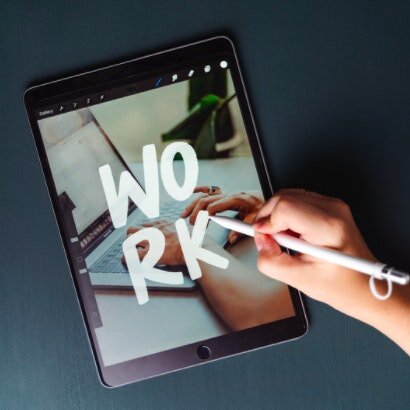Americans are driving themselves to exhaustion
In the US rates of anxiety, depression, and self-destructive behaviors, including obesity and addiction, are higher today than ever and appear to increase with each new generation. Chronically overworked and on-the-go, Americans are driving themselves to exhaustion, spending less quality time with themselves, their friends, and their families.
The paradox of the American dream
 Dr. Whybrow, author of American Mania: When More Is Not Enough, writes:
Dr. Whybrow, author of American Mania: When More Is Not Enough, writes:
“Seduced by the novelty and the opportunities afforded by our wealth, we have passed beyond need and fallen into an addictive striving for more: for more money, more speed, more house, more car, more food, more choice and more power… here lies the nightmarish paradox of the American dream: in our striving for more, we are discovering a miss-match between the wealth of goods and the technology-rich environment we have created and the biological limits of who we are as evolved creatures of our planet”
Our progress is unsustainable
The strength of our health and wellbeing is the baseline for everything else. Intellectually we know that if we don’t take care of ourselves our progress will be unsustainable, but that idea is much harder in practice. Womxn, despite our conditioning, need to learn to put our own oxygen masks on first.
Our behaviors and habits impact others
The allure of being able to “do it all”, means we’re setting unrealistic, undesirable goals for ourselves, setting ourselves up for failure, or worse, burnout and sadly, we’re also modeling these behaviors for others around us too.
It’s time to break free from old ideas that collectively hold us back and find a better, more humanist way forward, one that benefits everyone.
We have the concept of work/life balance all wrong
We’ve been taught the concept of work/life balance all wrong, it’s set us up with unrealistic expectations about how life should look. Balance is not about putting work at the center and balancing it against everything else in our lives.
Balance is about looking at all of the important buckets:
- Sleep
- Diet
- Movement
- Mental breaks
- Family time
- Friendships
- Time to be creative
- Time to learn
- Space for deep rest and self-care
- ….and yes, work too
We need to make sure we’re creating enough space for ourselves and to integrate each area of our lives in the best way possible.
Unfortunately, we’re held back from achieving anything close to resembling balance by the fear of “not enough” and the idea that you can’t be successful unless you are always on the go, showing up for others and constantly checking something off on the endless to-do lists we make for ourselves. That, however, is an empty promise that attaches our own self-worth to our productivity and leaves us (and the people close to us) feeling fried out.

Busyness is Actually Modern Laziness
“Action addiction is an advanced sort of laziness. It keeps us busily occupied with tasks and away from asking why. The busier we keep ourselves, the more we avoid being confronted with questions of life. It’s like climbing a ladder as fast as we can, only once we reach the top we realize it’s leaning against the wrong wall.
Busyness is a choice. We may have deadlines, projects, and activities, but we have the freedom to choose whether we become action addicts and busy-lazy. The truth is we can actually get more done by slowing down”
— Jaqueline Carter
Focus on your priorities and needs
When we get clear on our priorities and combine those with our physical and emotional needs, we can work to effectively set clearer, more realistic goals and stronger boundaries around those goals. Then we are able to focus on and achieve the things that really move the needle in our lives.
Reducing stress as you transition back to the office
 The past 18 months has been especially challenging on both our mental and physical health. As we transition back to “normal” some may welcome the return to on-site work, however, one-third of respondents in a new McKinsey survey said their return to work has had a negative impact on their mental health. Almost half of those who have not yet returned anticipate negative mental health impacts.
The past 18 months has been especially challenging on both our mental and physical health. As we transition back to “normal” some may welcome the return to on-site work, however, one-third of respondents in a new McKinsey survey said their return to work has had a negative impact on their mental health. Almost half of those who have not yet returned anticipate negative mental health impacts.
5 Ways to smooth your transition back to the office
Be patient with yourself (and others)
Just how long the transition takes can vary from person to person. Move slowly and thoughtfully, consider how others might be feeling too and know they might not be where you are today.
“Getting back to normal, or a new normal, will take some time. Be patient with yourself as you adjust,”
— Renee A. Exelbert, Phd
Progress is rarely linear, don’t expect to pop back into your old life immediately and also know things may never fully go back to how they were.
Take care of your health and well-being
Self-care is vital to building resilience. Self-care has been defined as, “a multidimensional, multifaceted process of purposeful engagement in strategies that promote healthy functioning and enhance well-being.”
Unfortunately, many people view self-care as a luxury, rather than a priority. Consequently, they’re left feeling overwhelmed, tired, and ill-equipped to handle life’s inevitable challenges.
“All the stress relief activities in the world won’t help if you aren’t taking care of yourself. Meditation won’t do you any good if you aren’t getting adequate sleep. Hitting the gym once in a while won’t relieve much stress if you’re only fueling your body with high-processed junk food. You need to take care of your basic needs first”
— Elizabeth Scott, MS
Take a gradual approach to socializing
Whether you’re returning to the office full time or just a few days per week, the disruption to your daily routine can feel daunting. It’s normal to feel some social anxiety.
“Taking a gradual approach to socializing can help ease the transition. Start connecting with individuals or smaller groups of people first before moving on to interactions with an entire team. Start building your support network at work again and specifically prioritize spending time with people who are supportive”
— Dr. Rashimi Parmar
Find your support team
Cultivate a support network of people who aren’t always so frenetic and don’t feed into the toxicity of hustle culture. Build stronger relationships with people who are modeling more connected, more grounded, more powerful ways of showing up.
Set clear boundaries and stick to them
“Boundaries are limits and values that we set for ourselves. As we know these and recognize these more, this will help us get back to doing the things we love or trying new things without fear or anxiety.”
— Jean Bogar
Remember, as things reopen and there is a push from some to get back to “normal” you may find your boundaries being tested. Pay attention and tune into your triggers so you can be prepared.
What are the types of boundaries?
They could be around things such as:
- Time – How much of it do you have, how do you want to spend it and how much are you willing to give away?
- Emotional – This boundary focuses on your feelings and how much emotional energy you’re willing to spend on something or someone?
- Physical – Are you able to take care of your physical needs, such as exercise, nutrition, rest and mental downtime?
- Space – Are you able to protect your personal space? As states reopen for business and rules around masks change, it shifts the responsibility of setting a boundary back onto the individual which can be a tricky situation to navigate.

How do you set clear boundaries?
Setting boundaries with another person doesn’t have to be combative, but you do need to be proactive, clear, consistent and firm if you don’t want your boundary to be repeatedly crossed. To reduce the chances of getting yourself into an uncomfortable situation or agreeing to something you don’t actually want to do:
- Name your boundaries. Decide what your boundaries are including the gray areas, what you are and are not comfortable with, where are those lines?
- Communicate your boundaries early and often. Make yourself a communication plan and be proactive about communicating it and setting expectations with others ahead of time, before your boundary is tested.
- Be clear, kind and firm about communicating what you want and need. Don’t be afraid to reinforce your boundary when needed. If the other person keeps crossing your boundary, there is a very good chance you haven’t clearly communicated it to them, even though you may think you have. Clarify, clarify, clarify.
- Learn to recognize when your boundaries are being tested. We aren’t going to be able to plan for every single boundary and situation. Sometimes we don’t know we have a boundary unless it’s being tested in real time. If you are feeling uncomfortable, step back and figure out what specifically is making you anxious, get granular with your self examination. To avoid feeling overwhelmed and frustrated, make sure you have some of the coping tools in your personal plan in mind. It will help remove some of the stress of making decisions or giving reactive feedback in the moment.
…But also don’t assume things have to go back to “normal”
“The upheaval of the pandemic was an opportunity to imagine a better society, but Instead, many are rushing back to “normal.” Society’s reopening is revealing just how quickly we can slide back into complacency.” – The Atlantic
Companies are offering more remote work post-pandemic, but workers are also quitting jobs at very high rates. Post-pandemic burnout spurs the “Great Resignation” among workers. Many don’t want to get back to normal, because normal was the problem, but there is still hope. Many companies are in fact planning to offer continued flexibility for remote work, including these 30 companies, so what is the future of remote work?

Finding a new way to work, that works for everyone
COVID killed the traditional workplace, what should companies do now? One size clearly doesn’t fit all, while some employees basked in the newfound free time and flexibility during the pandemic, others felt isolated working remotely. As we adjust, companies will need to make accommodations depending on their employees’ needs. The Martec Group found four types of employees that companies should consider when making plans for a return to the office:
- Thriving
- Hopeful
- Discouraged
- Trapped.
Is hybrid work the future?
Hybrid work is a blended model where some employees return to the workplace and others continue to work from home. The next great disruption is hybrid work but are we ready?
“With over 40 percent of the global workforce considering leaving their employer this year, a thoughtful approach to hybrid work will be critical for attracting and retaining diverse talent”
— Microsoft
Companies will need to step up to address company culture in this new hybrid world.
Make your life work for you but don’t try to do it alone
There is, of course, endless advice out there which can be helpful for us to learn and practice new tools plus better advocate for ourselves, but at the end of the day how you manage your work, your life and your wellbeing is a very personal experience, you have to create your own road map. Figure out where you are and what you need, then don’t be afraid to advocate for yourself.
- Start by slowing down, taking more breaks so you have space to tune in.
- Breathe to quiet the chatter in your mind and then listen to your body.
- Work to create a plan for and address your individual needs.
- Then communicate your needs to others and set clear boundaries so you can reprioritize your time and use your energy effectively in a way that works for you.



